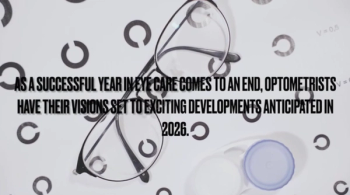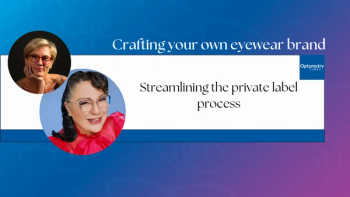
AOA 2023: Understanding and applying different angiography
Jessica Haynes, OD, shares highlights from her 2023 AOA Optometry's Meeting presentation, "Application of angiography."
Jessica Haynes, OD, sat down with Optometry Times®' assistant managing editor Emily Kaiser to share key highlights from her presentation, "Applications of angiography," which she presented during the 2023 AOA Optometry's Meeeting held this year in Washington, DC.
Editor's note: This transcript has been lightly edited for clarity.
Emily Kaiser, Assistant Managing Editor:
Hi everyone. I'm Emily Kaiser with Optometry Times and I'm sitting down with Dr. Jessica Haynes, who will be presenting a course entitled, "Applications of angiography," at Optometry's Meeting, which is hosted by the AOA in Washington DC. Welcome, Dr. Haynes. Thank you for taking the time to talk.
Jessica Haynes, OD:
Thank you. I appreciate you having me.
Kaiser:
Of course, I'm excited to hear more. So first, can you give us a brief overview of your course?
Haynes:
Definitely. The course, as you said is titled, "Applications of angiography," and it talks about different modes of angiography and how they're used to evaluate the
Kaiser:
Perfect, that sounds really, really interesting. And what do you hope optometrists take away from your talk?
Haynes:
So a few things. I hope that we realized that things like fluorescein angiography and OCT angiography are two different styles of technology and imaging. Because I think there's this this idea that OCT angiography is going to replace fluorescein angiography, and while we don't do fluorescein angiography as often as we used to because of OCT and OCTA, it's still its own separate diagnostic tool. and sometimes It's the only tool that you have to see what you need to see. So for example, seeing things like blood vessels that are leaking, the fluorescein angiography is going to be the tool you need to see that.
So I think that's a big takeaway is that all of these are unique applications, and they all have their own place. And also with OCTA, even though It's non-invasive, it's very fast. It's a new
Kaiser:
Yeah, for sure. It's such an important thing to talk about. And how will this information trickle down to patient care?
Haynes:
You know, optometrists are managing more and more retina disease, and identifying these problems, keeping them in-house longer; whereas before, we may refer a lot of stuff out. And as technologies change, there may be even some treatment methods that become more optometry-friendly in retina disease.
So having tools, like especially OCTA because that's extremely optometry friendly—it's noninvasive, you don't have to be restricted by your state licensure whether you can do OCTA. So the better we can evaluate these patients and make these diagnoses, the better they're going to be treated, the longer we can potentially keep them in our offices, and even when we refer them out, the better that referral is going to be.
So ultimately, that's going to improve patient care by having a better understanding of these technologies.
Kaiser:
Absolutely. Well, thank you so much for taking the time to talk to me and I can't wait to see you in DC.
Haynes:
Thank you so much, I appreciate it.
Newsletter
Want more insights like this? Subscribe to Optometry Times and get clinical pearls and practice tips delivered straight to your inbox.













































.png)


